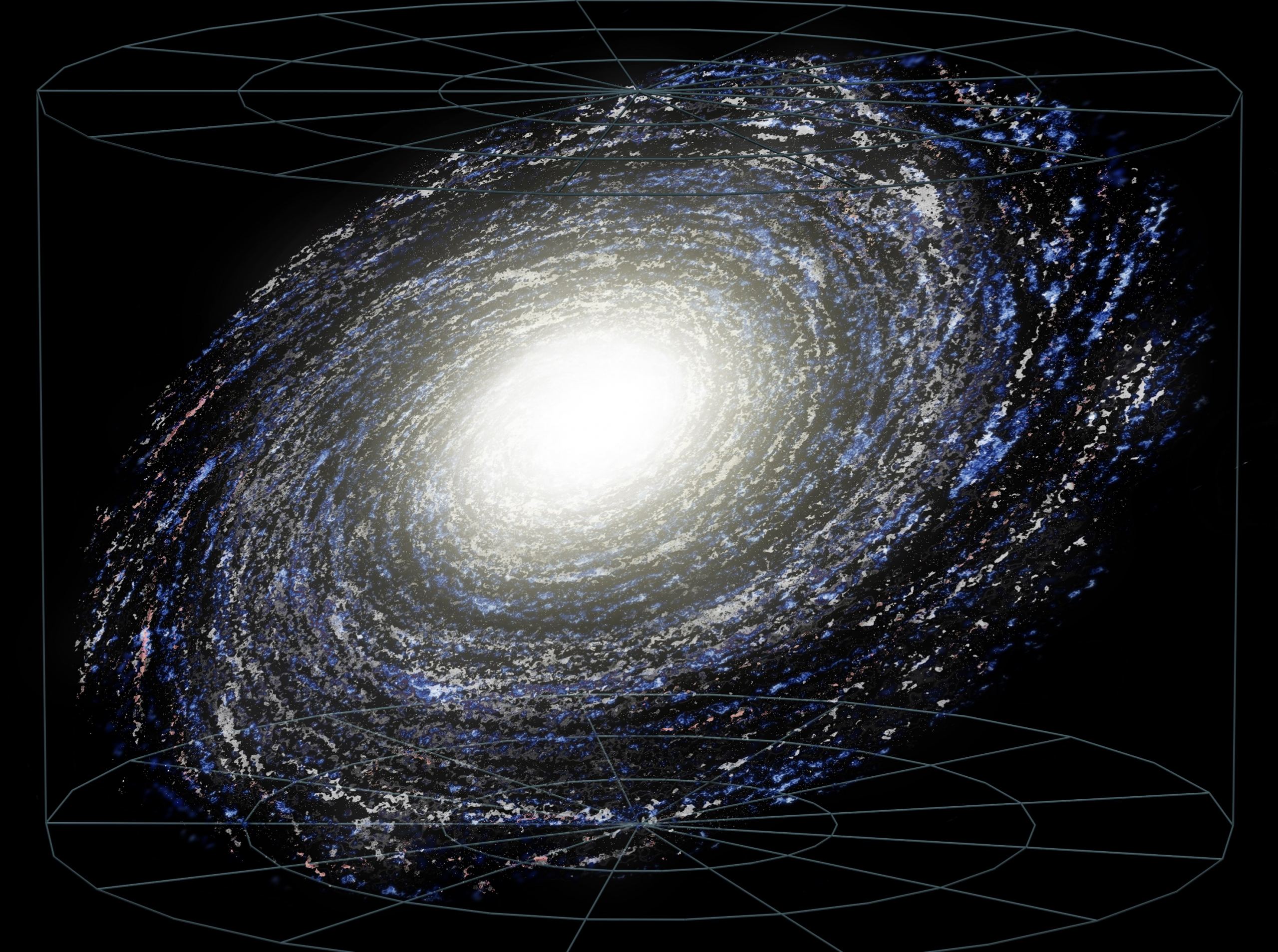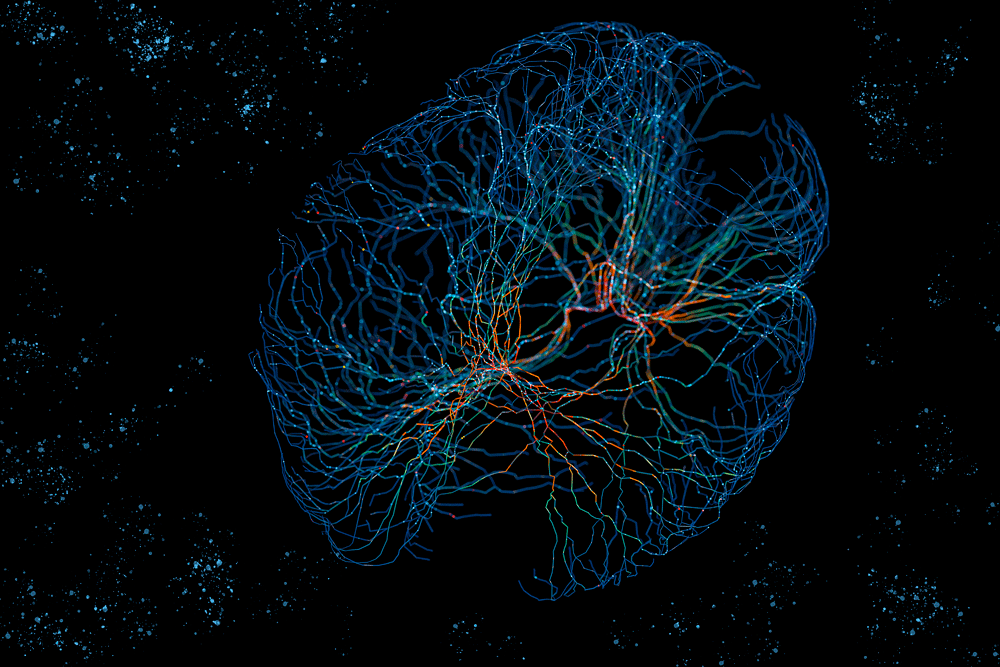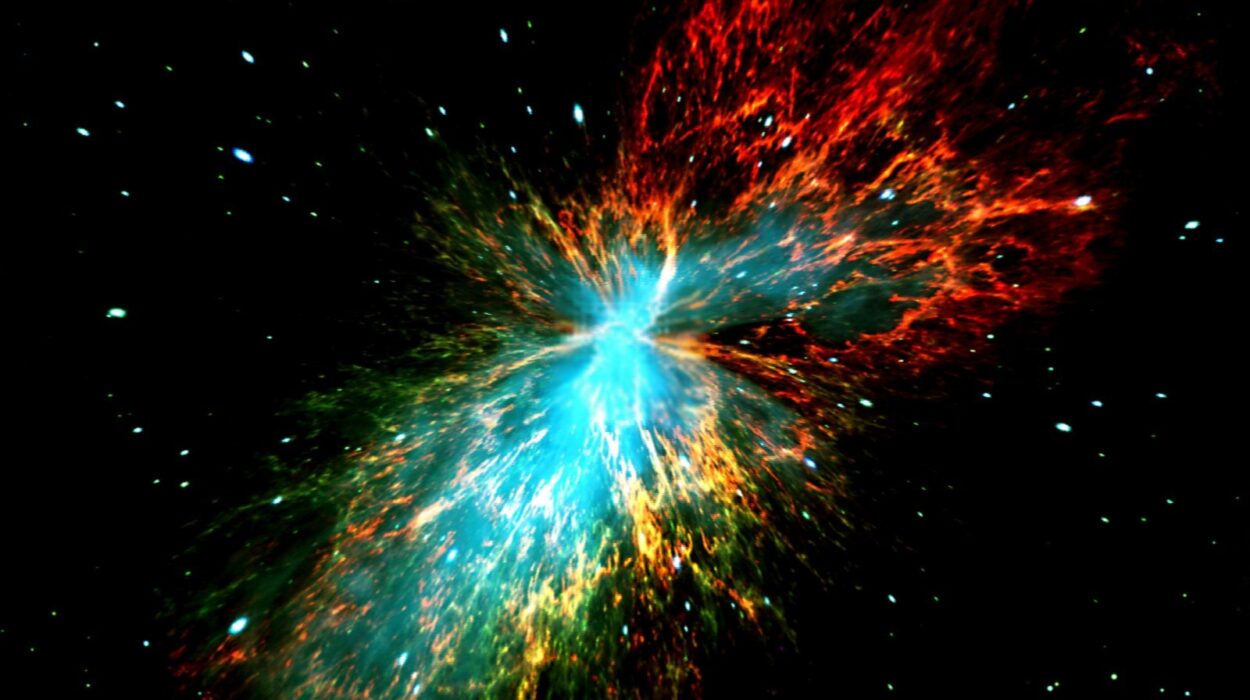The question of where life might arise in the universe has captivated scientists and philosophers for centuries. When we look up at the night sky, we see billions of stars, each potentially hosting its own system of planets. Yet, not every region of our galaxy—the Milky Way—is equally likely to support life. Some areas are too chaotic, bombarded by supernovae and cosmic radiation; others are too chemically barren to form Earth-like planets. Between these extremes lies what astronomers call the Galactic Habitable Zone (GHZ)—a vast region where the conditions may be just right for life to develop and persist over billions of years.
The Galactic Habitable Zone is a concept that bridges astrophysics, planetary science, and biology. It extends the familiar idea of the “habitable zone” around stars—the so-called “Goldilocks zone” where liquid water can exist—to a galactic scale. Instead of focusing on a single star system, it considers entire regions of the galaxy and how factors like radiation, metallicity, and stellar density influence the potential for life. Understanding this zone not only helps us locate where life might exist in the Milky Way but also offers profound insight into our own cosmic origins and the delicate balance that made life on Earth possible.
The Origins of the Galactic Habitable Zone Concept
The concept of the Galactic Habitable Zone was first articulated in the late 20th century as scientists began to realize that habitability could not be understood solely at the planetary level. Early exoplanet discoveries and galactic models indicated that environmental conditions varied dramatically across the Milky Way. Some regions were teeming with star formation and violent events, while others were old, stable, but lacking the chemical elements necessary to form terrestrial planets.
Astrobiologists Guillermo Gonzalez, Donald Brownlee, and Peter Ward were among the first to formalize the GHZ idea around the year 2000. They proposed that certain areas of the galaxy are more favorable for the development of complex life than others, combining factors such as stellar density, supernova frequency, and chemical composition. Their work built on earlier studies of galactic structure and metallicity—an astrophysical term referring to the abundance of elements heavier than hydrogen and helium, which are essential for building rocky planets and biological molecules.
This framework quickly became a cornerstone of astrobiology. Just as Earth’s position in the Solar System allows for liquid water and a stable climate, our Solar System’s position in the Milky Way appears to provide a relatively calm and chemically rich environment—potentially a “sweet spot” in the vast galactic landscape.
The Structure of the Milky Way and Its Influence on Habitability
To understand the Galactic Habitable Zone, it is essential first to understand the structure of our galaxy. The Milky Way is a barred spiral galaxy roughly 100,000 light-years in diameter, consisting of several main components: the central bulge, the disk, and the halo.
The central bulge is a dense, spherical region of old stars surrounding the galactic core. It contains a supermassive black hole, Sagittarius A*, whose gravitational influence shapes the dynamics of nearby stars. The bulge is rich in metals, meaning it has the chemical ingredients for planet formation, but it is also an extremely hostile environment. The density of stars leads to frequent gravitational disturbances, supernova explosions, and high levels of radiation—all factors detrimental to the long-term stability of planetary systems and biological evolution.
The disk, which extends outward from the bulge, contains the spiral arms where most of the galaxy’s star formation occurs. It is within these arms that we find regions of moderate metallicity and relative stability—ideal conditions for the formation of stars like the Sun and planets like Earth. The Solar System itself lies in the Orion Arm, about 27,000 light-years from the galactic center.
Surrounding the disk and bulge is the halo—a sparsely populated region containing ancient stars and globular clusters. The halo’s stars are extremely metal-poor, meaning they formed early in the galaxy’s history, before supernovae had enriched the interstellar medium with heavy elements. As a result, the halo is unlikely to host many rocky planets, let alone habitable ones.
Between these extremes, somewhere within the galactic disk but far from the violent center, lies the zone where conditions are balanced enough for life to arise and endure: the Galactic Habitable Zone.
The Role of Metallicity in Habitability
One of the key parameters defining the GHZ is metallicity—the abundance of heavy elements in a region of the galaxy. Life as we know it depends on elements such as carbon, oxygen, nitrogen, phosphorus, and sulfur, which are produced by stars through nuclear fusion and dispersed into space by supernovae. Without a sufficient abundance of these elements, it would be impossible to form Earth-like planets or complex organic molecules.
Metallicity varies systematically across the Milky Way. The inner regions of the galaxy, closer to the center, have undergone more cycles of star formation and supernova explosions, enriching them with metals. However, these same regions also experience intense stellar activity and radiation. In contrast, the outer regions of the galaxy have lower metallicity, as fewer generations of stars have lived and died there.
The ideal region for life is therefore somewhere in between—where metallicity is high enough to allow planet formation but not so high that the environment becomes dangerous. Studies suggest that this balance occurs at roughly 20,000 to 30,000 light-years from the galactic center, corresponding roughly to the location of our own Solar System.
Interestingly, too much metallicity can also be detrimental. High-metal environments tend to produce more giant planets like Jupiter, which can disrupt the orbits of smaller, potentially habitable worlds. Thus, a moderate metallicity not only provides the raw materials for life but also promotes a planetary architecture conducive to stability and long-term evolution.
Supernovae, Radiation, and Galactic Safety
While chemical richness is essential for life, so is stability. Supernovae—massive stellar explosions—play a dual role in shaping the GHZ. On one hand, they are the primary source of the heavy elements necessary for planet formation. On the other hand, they emit lethal doses of radiation and cosmic rays that can sterilize nearby planets or strip away their atmospheres.
Regions of the galaxy with high star formation rates, such as the spiral arms and the galactic core, are also regions where supernovae occur frequently. This constant bombardment of radiation poses a severe challenge to the emergence and persistence of complex life.
A single nearby supernova can have catastrophic consequences for life on Earth-like planets, potentially destroying the ozone layer and exposing the surface to harmful ultraviolet radiation. Some scientists have even speculated that mass extinctions in Earth’s history may have been triggered by relatively close supernovae.
Therefore, an ideal habitable region would lie in a part of the galaxy where supernova frequency is low enough to ensure long-term stability but not so low that the region lacks the heavy elements produced by these stellar deaths. Once again, our position in the galaxy—between the inner danger zone and the outer metal-poor frontier—seems to fall within this delicate equilibrium.
The Importance of Orbital Location Within the Galaxy
The Milky Way’s spiral structure also influences habitability through the motion of stars around the galactic center. The spiral arms are dynamic regions of active star formation, while the spaces between them are comparatively tranquil. A star system that remains too long within a spiral arm faces higher risks from nearby supernovae, gravitational perturbations, and interstellar clouds.
The Sun’s orbit appears to be particularly favorable. It moves through the galaxy at a rate that keeps it between spiral arms for most of its orbit, reducing exposure to these hazards. Some researchers have even proposed that this orbital path may have been crucial for the uninterrupted evolution of complex life on Earth. If the Solar System had spent more time in the crowded spiral arms, Earth’s biosphere might have been periodically disrupted by cosmic catastrophes.
Additionally, the Sun’s nearly circular orbit helps maintain a consistent distance from the galactic center, avoiding the extremes of radiation and gravitational disturbance. This stability over billions of years has allowed Earth’s environment to remain relatively constant—an essential condition for the slow, cumulative process of biological evolution.
The Galactic Habitable Zone as a Dynamic Concept
While early models portrayed the GHZ as a static ring-shaped region within the galactic disk, modern research suggests it is far more dynamic. The conditions for habitability change over time as the galaxy evolves. Star formation rates, supernova frequency, and chemical enrichment all vary across cosmic history.
In the early Milky Way, metallicity was too low to form many rocky planets. As generations of stars lived and died, the interstellar medium became enriched with heavy elements, gradually expanding the potential GHZ outward. However, this enrichment also increased the rate of giant planet formation and stellar activity, introducing new risks.
Today, the GHZ is thought to occupy an annular region roughly between 7 and 10 kiloparsecs from the galactic center (about 23,000 to 33,000 light-years). Yet, it is not uniform. Within this band, local conditions—such as proximity to supernova remnants, interstellar clouds, or star clusters—can greatly affect habitability.
Future galactic evolution will continue to reshape the GHZ. As the Milky Way ages, star formation will slow, radiation levels will decrease, and metallicity will gradually equalize. Over billions of years, the GHZ could widen, potentially allowing life to emerge in regions that are currently inhospitable.
The Role of Galactic Dynamics and Cosmic Collisions
The Milky Way’s long history includes collisions and mergers with smaller galaxies, events that have profound implications for habitability. These interactions can trigger bursts of star formation, increasing both metallicity and supernova activity. They can also disrupt stellar orbits, ejecting stars from the disk or sending them into unstable regions.
The upcoming merger between the Milky Way and the Andromeda Galaxy, predicted to occur in about four billion years, will dramatically reshape the GHZ. While most stars will pass harmlessly by one another, the gravitational chaos will likely trigger intense star formation and radiation bursts, temporarily shrinking the habitable zone.
Over the long term, however, the merger will produce a more massive elliptical galaxy with widespread chemical enrichment and lower star formation rates—conditions that might eventually favor stable, long-lived planetary systems again. Thus, even galactic collisions, though catastrophic in the short term, can contribute to the long-term diversification of habitable environments.
The Sun’s Position and the Rarity of Our Circumstances
Earth’s position within both the Solar System and the Milky Way may not be coincidental. The Sun lies near the midplane of the galactic disk, roughly two-thirds of the way from the center, in a relatively low-density region of the Orion Arm. This location offers several advantages: moderate metallicity, low radiation, and orbital stability.
Statistically, stars with these precise characteristics may be relatively rare. Many are either too close to the galactic center, where conditions are violent, or too far out, where planets are unlikely to form. The concept of the GHZ suggests that the emergence of complex life like that on Earth might require a unique confluence of factors—stellar, planetary, and galactic—all aligning over cosmic timescales.
Some scientists argue that this fine-tuning supports the “Rare Earth Hypothesis,” which posits that while microbial life may be common throughout the universe, complex, intelligent life is exceedingly rare. If true, our existence may owe as much to the Sun’s fortunate placement within the GHZ as to the chemistry of our planet.
Galactic Chemical Evolution and the Building Blocks of Life
The elements necessary for life were forged in the hearts of stars. Over billions of years, successive generations of stars enriched the galaxy’s gas clouds with carbon, oxygen, nitrogen, and iron. This process, known as galactic chemical evolution, determines where and when the materials for life become available.
Regions with rapid star formation reach high metallicity quickly but also experience more destructive events. In contrast, outer regions evolve slowly, delaying the availability of key elements. The GHZ represents the equilibrium between these processes—a zone where life’s building blocks exist in abundance and where they can survive long enough to form stable biospheres.
The same principle may apply to other galaxies. Spiral galaxies similar to the Milky Way likely have their own GHZs, while elliptical or irregular galaxies—often either too old or too chaotic—may be less hospitable. Thus, understanding the GHZ not only helps us locate life within our galaxy but also guides the search for life beyond it.
Potential for Life Beyond the Milky Way
If the concept of the GHZ applies universally, then other galaxies may host their own habitable regions. Galaxies with moderate star formation, balanced metallicity, and stable structures are prime candidates. Spiral galaxies, with their mix of young and old stars, offer the most promise.
However, galaxies undergoing intense starbursts or those dominated by massive black holes may be too hostile for sustained habitability. Similarly, dwarf galaxies often lack the mass to retain metals, while giant elliptical galaxies, though chemically rich, may have exhausted their gas supply, halting new planet formation.
The Andromeda Galaxy, our nearest large neighbor, likely possesses its own GHZ similar to the Milky Way’s. When our galaxies merge, their habitable zones may overlap, potentially creating new regions where life could eventually emerge.
Implications for the Search for Extraterrestrial Life
The GHZ provides a valuable framework for prioritizing the search for life in the galaxy. By identifying regions where conditions are most favorable, astronomers can focus their efforts more efficiently. Missions that search for exoplanets, such as the Kepler Space Telescope and its successors, already take metallicity and stellar environment into account when selecting targets.
Future observatories, both ground-based and spaceborne, will extend this search by analyzing planetary atmospheres for biosignatures—gases like oxygen, methane, and carbon dioxide that may indicate biological activity. Understanding the GHZ helps contextualize these findings, distinguishing between planets that are merely habitable in principle and those that exist in environments conducive to long-term stability.
Moreover, the GHZ concept underscores the interconnectedness of cosmic processes. The same supernovae that pose threats to life also create the elements that make life possible. The balance between destruction and creation, chaos and order, is what shapes the galactic tapestry in which life can emerge.
The Philosophical Significance of the Galactic Habitable Zone
Beyond its scientific importance, the GHZ carries profound philosophical implications. It reframes our understanding of humanity’s place in the cosmos. Rather than existing in an arbitrary location, we may inhabit one of the rare regions in the galaxy where the conditions for life are optimized.
This realization evokes a sense of both wonder and fragility. The galaxy is not uniformly friendly; it is a complex, evolving system where life must navigate between extremes. Our existence, then, may represent a delicate balance struck by cosmic processes over billions of years—a balance that could be exceedingly rare.
At the same time, the GHZ reminds us that we are products of galactic evolution. The atoms in our bodies were forged in ancient stars, scattered across the galaxy, and reassembled in the cradle of a stable, metal-rich region. In a very real sense, we are children of the Milky Way, shaped by its structure, chemistry, and history.
The Future of Life in the Galaxy
As the Milky Way continues to evolve, so too will its habitable regions. Star formation will slow, reducing the number of new worlds but also decreasing the frequency of destructive events. The GHZ may expand outward as metallicity increases in the outer disk.
However, the long-term future of life in the galaxy will also depend on cosmic factors beyond our control. Supernovae, gamma-ray bursts, and galactic mergers could reshape the GHZ in unpredictable ways. Over tens of billions of years, as stars like the Sun burn out, the galaxy will gradually dim, and the conditions for life as we know it will fade.
Yet, even in this distant future, the legacy of the GHZ will persist. It represents a period in the galaxy’s history—a window of opportunity—when the cosmos was alive with potential, and life had the chance to emerge and contemplate its origins.
Conclusion
The Galactic Habitable Zone is more than an astronomical construct; it is a lens through which we can understand the cosmic balance that made life on Earth possible. It shows that habitability is not a random occurrence but the result of countless interwoven factors—chemical, physical, and temporal—operating on both planetary and galactic scales.
Our position in the Milky Way is not only geographically favorable but historically privileged. We live in a time and place where the galaxy’s violent youth has passed, its chemistry is rich, and its environment is stable enough to nurture complex life.
As we continue to explore the universe, the GHZ will guide our search for life, reminding us that the cosmos is neither uniformly hostile nor uniformly friendly—it is a dynamic, evolving system where life must find its narrow foothold. The fact that such a foothold exists at all is a testament to the resilience of nature and the intricate harmony of the galaxy we call home.






